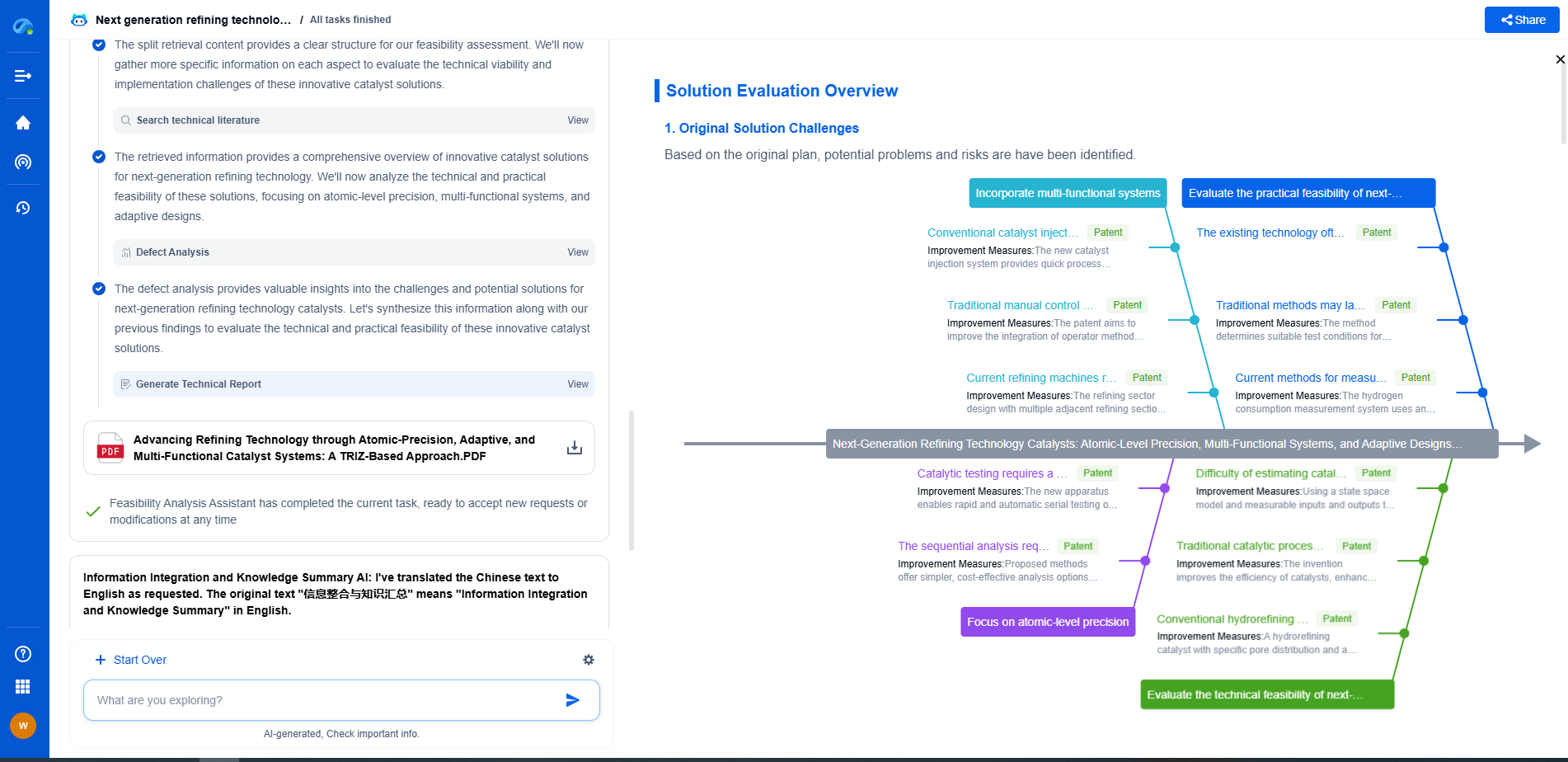JT Valves vs. Turboexpanders: Cooling Efficiency Comparison
JUL 21, 2025 |
In the realm of industrial refrigeration and natural gas processing, achieving optimal cooling efficiency is a pivotal concern for plant operators and engineers. Two widely used technologies in this domain are the Joule-Thomson (JT) valves and turboexpanders. Both methods are employed to cool gases through expansion, yet they operate based on fundamentally different principles. This article delves into the cooling efficiency of JT valves versus turboexpanders, providing a comprehensive comparison to help in making informed decisions for specific applications.
Understanding JT Valves
JT valves, or Joule-Thomson valves, are a straightforward and reliable technology for gas cooling. They operate on the principle of the Joule-Thomson effect, which describes how a real gas experiences a temperature change when it is forced through a valve or porous plug while kept insulated so that no heat is exchanged with the environment. This process relies on the fact that certain gases cool upon expansion at constant enthalpy, especially when they start above their inversion temperature.
Advantages of JT Valves
JT valves provide a simple and cost-effective solution for cooling applications, particularly in smaller-scale operations or where precision control is not paramount. Their design is relatively uncomplicated, with minimal moving parts, which contributes to lower maintenance requirements. Moreover, JT valves are beneficial in scenarios where the capital expenditure needs to be minimized, as they generally require lower initial investment compared to turboexpanders.
Limitations of JT Valves
Despite their simplicity, JT valves have limitations, particularly in terms of energy efficiency. The Joule-Thomson effect inherently involves some energy loss, which can be significant in large-scale operations. Additionally, the cooling effect is often less controllable, making it less suitable for applications requiring precise temperature regulation. The inefficiencies associated with JT valves can also lead to increased operational costs over time.
Turboexpanders: A High-Efficiency Alternative
Turboexpanders, also known as expansion turbines, offer a high-efficiency alternative to JT valves. These devices harness the energy from gas expansion to perform work, typically by driving a compressor or generator. This design not only enhances the cooling effect but also recovers some of the energy lost in the expansion process, converting it into usable mechanical energy.
Advantages of Turboexpanders
The primary advantage of turboexpanders is their superior energy efficiency. By recovering energy during the expansion process, turboexpanders can significantly reduce the overall energy consumption of a plant. This feature makes them particularly attractive in large-scale operations, where energy savings can translate into substantial cost reductions. Furthermore, turboexpanders offer precise control over the cooling process, which is crucial in applications requiring stringent temperature management.
Challenges with Turboexpanders
However, turboexpanders come with their own set of challenges. They are typically more complex and costly to install and maintain compared to JT valves. The initial capital investment for turboexpanders can be prohibitive for smaller operations or those with limited budgets. Additionally, the complexity of turboexpanders necessitates skilled personnel for operation and maintenance, which can increase labor costs.
Applications and Suitability
The choice between JT valves and turboexpanders largely depends on the specific requirements of the application. JT valves are well-suited for smaller operations or applications where simplicity and low capital cost are paramount. In contrast, turboexpanders are ideal for large-scale operations where energy efficiency and precise control are critical.
Conclusion
In conclusion, both JT valves and turboexpanders have their respective strengths and limitations. JT valves offer simplicity and cost-effectiveness, making them suitable for certain applications, while turboexpanders provide superior energy efficiency and control, justifying their use in more demanding situations. Understanding the distinct characteristics and operational contexts of these technologies is essential for selecting the appropriate cooling solution. Whether leaning towards the simplicity of JT valves or the efficiency of turboexpanders, the decision should align with the operational goals and constraints of the specific industrial application.
As clean energy and decarbonization drive new breakthroughs in hydrogen storage, CO₂ transport, and alternative gas carriers, keeping pace with technical trends and patent activity is critical to staying competitive.
Patsnap Eureka helps innovators in compressed gas storage, high-pressure tank design, gas sensor systems, and pipeline materials accelerate research by offering instant, AI-powered insights into global patents, related technologies, and emerging white spaces.
🚀 Bring speed, precision, and strategic foresight to your innovation and IP decision-making in the gas transport sector—try Eureka today and unlock a smarter path forward.
- R&D
- Intellectual Property
- Life Sciences
- Materials
- Tech Scout
- Unparalleled Data Quality
- Higher Quality Content
- 60% Fewer Hallucinations
Browse by: Latest US Patents, China's latest patents, Technical Efficacy Thesaurus, Application Domain, Technology Topic, Popular Technical Reports.
© 2025 PatSnap. All rights reserved.Legal|Privacy policy|Modern Slavery Act Transparency Statement|Sitemap|About US| Contact US: help@patsnap.com

